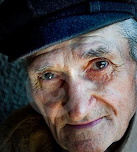 "The fact that the newly disembodied
dead seemed often to find themselves not only dressed, but dressed in items of
clothing they’d possessed in life, early on struck critics of this kind of
narrative as final and irrefutable proof of their absurdity. For consciousness
to survive death in any form is, from this perspective, absurd enough. To
survive it personally, with one’s entire earthly sensibility intact, is more
so. But to survive it in one’s favorite slacks and T-shirt is the last straw.
As psychologist David Fontana, in a discussion of the related phenomenon of
apparitions appearing in familiar clothes to people in this world, writes: 'people often seem more surprised by the references to clothes than they do to
the references to the apparitions themselves, and use the idea of clothes as a
reason for dismissing everything as the observer’s imagination.'
"The fact that the newly disembodied
dead seemed often to find themselves not only dressed, but dressed in items of
clothing they’d possessed in life, early on struck critics of this kind of
narrative as final and irrefutable proof of their absurdity. For consciousness
to survive death in any form is, from this perspective, absurd enough. To
survive it personally, with one’s entire earthly sensibility intact, is more
so. But to survive it in one’s favorite slacks and T-shirt is the last straw.
As psychologist David Fontana, in a discussion of the related phenomenon of
apparitions appearing in familiar clothes to people in this world, writes: 'people often seem more surprised by the references to clothes than they do to
the references to the apparitions themselves, and use the idea of clothes as a
reason for dismissing everything as the observer’s imagination.'
"Like it or not, though the clothing issue is just too widespread to be ignored. Scientist Robert Crookall, who wasn’t one to look away from a consistent theme in afterlife material no matter how ridiculous it might strike others, even devoted an entire monograph to the subject (titled, appropriately enough, ‘Ghost Clothes’). He there writes the following: 'If the physical body has an objective etheric double, then presumably all other physical objects, including of course clothes, must have etheric doubles.'
"Etheric derives from ether, a word that, before its modern use in organic chemistry, referred to a mysterious intangible substance that ancient philosophers hypothesized permeated the entire universe. The spiritual body closest to the physical body (the one described in narratives like the ones above, that acts as a kind of battery supplying transphysical energies to the physical body before the “cord” connecting the two is severed) is often called the etheric body.
"By positing the existence of a world just as real as or even more real than ours, but more susceptible to our unconscious perceptive/creative abilities, the imaginal can help us see that the world we enter at death might hold not just things like ethereal, semiphysical cords and threads but far more familiar and personal items as well. The basic idea here (and it is an idea stated again and again in postmortem literature both ancient and modern) is that when we die we remain, first and foremost, ourselves—with our same habits and limitations, our same quirks, and our same strengths. We have bodies, we have perceptions, we are capable of movement and decision and indecision . . . And, because the doors of the fantastically intricate treasure house of earthly memory are thrown open, every object we ever came into contact with while alive is capable of being resuscitated.”
Ptolemy Tompkins, The Modern Book of the Dead (Atria Books, 2012), 209-11.









